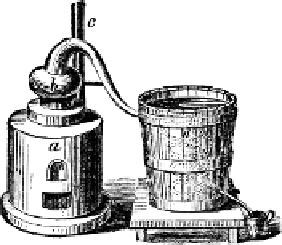Geoscience Reference
In-Depth Information
6
Geochemical systems
This chapter looks at the changes that over time affect the geochemical properties of a
system or a set of systems, such as the mantle, the crust, or the ocean, when subjected to dis-
turbances whether caused naturally or by human activity. The essential concepts utilized -
residence time and forcing - are taken from chemical engineering. Viewing system Earth
as a chemical factory composed of reactors, valves, sources, and sinks, has proved to be a
simple and robust model. The theory goes by various names, with the “box model” proba-
bly the most widely used. We will first set out the principles by describing the behavior of
a system with a single reservoir and then go on to generalize the approach.
6.1 Single-reservoir dynamics
Let us begin by considering a lake (
Fig. 6.1
) containing a mass of water
M
that we will
take to be constant. A river flows through the lake with a rate of flow
Q
, which we will
express in kilograms per year;
Q
is therefore the same upstream and downstream. We are
interested in the balance of a chemical species in the lake. A chemical element
i
introduced
upstream with a concentration
C
in
is either lost through the lake outlet or entrained into
sediments. The sedimentation rate
P
is also expressed in kilograms per year. The lake
itself is considered homogeneous, being well mixed by turbulent flow and by convection.
The concentration
C
i
of an element
i
is therefore the same in the lake and in the
downstream outflux. This balance can be written:
M
d
C
i
d
t
QC
in
−
QC
i
PC
sediment
=
−
(6.1)



